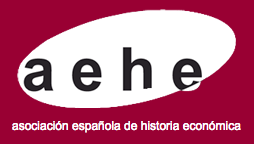Women’s wages and subsistence family income in Mendoza (Argentina) at the beginning of the 20th century
DOI:
https://doi.org/10.33231/j.ihe.2023.04.001Keywords:
living conditions, women´s wages, subsistence family income, wage gap, N36, O14, I30Abstract
This article aims to estimate women’s wages and their relative weight in the income of families in popular sectors in the expansive cycle of the Argentine economy and of the city of Mendoza in particular between the end of the 19th century and 1914. Specifically, it is intended to analyze the evolution and contribution of the wages of laundresses, seamstresses, cooks and ironers to the total income of cohabiting groups of diverse conformation, registered by the Second National Population Census of 1895. Likewise, the wage gap is examined in relation to men and women’s labor mobility in public institutions. Finally, counterpoints are established
with the wages of seamstresses and ironers employed in the City of Buenos Aires, taking into account some indicative prices of the cost of living (bread, meat and rent for a room) and the wage gaps related to male occupations, such as the unskilled building labourer.
Downloads
Published
How to Cite
Issue
Section
License
Copyright (c) 2023 Patricia Olguín, Beatriz Bragoni

This work is licensed under a Creative Commons Attribution-NonCommercial-NoDerivatives 4.0 International License.
Aquellos autores/as que tengan publicaciones con esta revista, aceptan los términos siguientes
- Los autores/as conservarán sus derechos de autor y garantizarán a la revista el derecho de primera publicación de su obra, el cuál estará simultáneamente sujeto a la Licencia de reconocimiento de Creative Commons Reconocimiento-No comercial-Sin obra derivada 4.0 Internacional que permite a terceros compartir la obra siempre que se indique su autor y su primera publicación esta revista, y no permite hacer uso comercial de la misma ni tampoco obras derivadas.
- Los autores/as podrán adoptar otros acuerdos de licencia no exclusiva de distribución de la versión de la obra publicada (p. ej.: depositarla en un archivo telemático institucional o publicarla en un volumen monográfico) siempre que se indique la publicación inicial en esta revista.
Plagio y fraude científico
La publicación de un trabajo que atente contra los derechos de propiedad intelectual será responsabilidad de los autores/as, que serán los que asuman los conflictos que pudieran tener lugar por razones de derechos de autor. Los conflictos más importantes pueden darse por la comisión de plagios y fraudes científicos.
Se entiende por plagio:
- Presentar el trabajo ajeno como propio.
- Adoptar palabras o ideas de otros autores sin el debido reconocimiento.
- No emplear las comillas u otro formato distintivo en una cita literal.
- Dar información incorrecta sobre la verdadera fuente de una cita.
- El parafraseo de una fuente sin mencionar la fuente.
- El parafraseo abusivo, incluso si se menciona la fuente.
Las prácticas constitutivas de fraude científico son las siguientes:
- Fabricación, falsificación u omisión de datos y plagio.
- Publicación duplicada.
- Conflictos de autoría.





